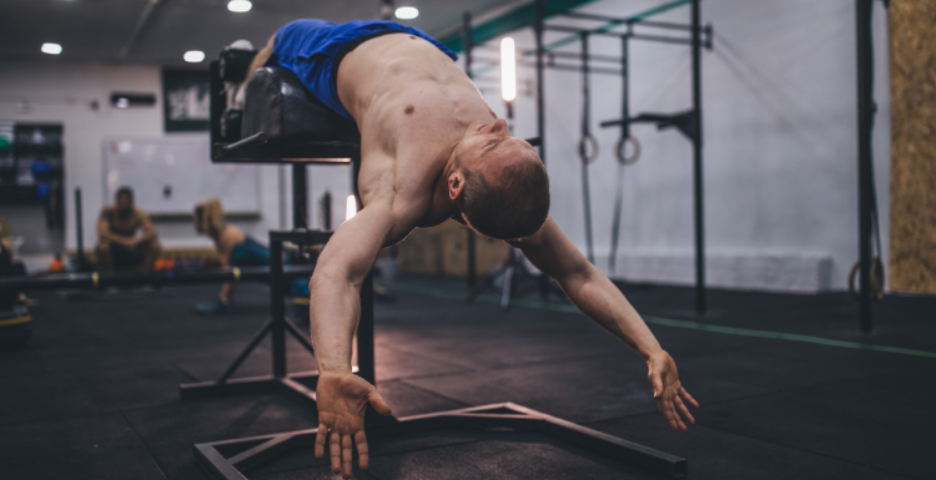If you find yourself a couch potato lately or want to maintain an active, healthy lifestyle, a Roman chair is a great way to get a full-body workout.
Roman chair sit-ups are good for your abs and an excellent way to supercharge your back and glutes.
The benefits of roman chair sit-ups extend beyond your abdominals as they are also a fantastic way of supercharging your glutes and back.
We’ll break down the potential benefits of roman chair sit-ups and explain how to execute roman chair sit-ups correctly.
What is a Roman chair Sit-up?
You need one piece of equipment for sit-ups and Roman chair planks: Roman chair. Roman chair plank and sit-ups are callisthenics exercises that primarily target the abs, lower back, and hip flexors to a lesser extent.
However, there are a variety of roman chair plank and sit-up variations you may try that may need a different set of tools for roman chair plank and sit-ups or may even be done without any equipment.
With the help of the step-by-step Roman chair sit-up instructions on this page, you can easily learn the Roman chair sit-up form. The roman chair plank and the sit-up are good exercises for people with an intermediate level of physical fitness and exercise knowledge.
It is a difficult core exercise that needs existing strong abs to execute properly. Therefore, it is not advised for beginners because poor execution could result in injury.
It is far more difficult than standard sit-ups on a bench or the floor because you have to control the motion when you lower your upper body. Additionally, your back is not supported.
What muscles do Roman chair sit-ups work?
- Target muscle:Iliopsoas
- Synergists:Tensor Fasciae Latae, Sartorius, Adductor Longus, Adductor Brevis,Rectus Femoris, Pectineus,
- Important stabilizers:Rectus Abdominis, Obliques
The Roman chair will help you develop a strong core by working on your abdominals, lower back, hips, waist, glutes, and hamstrings.
As you go about your regular activities and compete in sports, your core muscles help you maintain good posture and balance. Exercises for the abs include Russian twists, sit-ups, and crunches.
How To Do Roman Chair Sit-Ups At Home
Step 1 – Lock in Your Legs
Make sure the rollers are positioned at the correct height. To sustain yourself if your core is having trouble, you need your legs to be sturdy.
Step 2 – Lean Back
Slowly return to the position you would be in for a sit-up by stretching your legs back to the point where they lightly touch the roller, and your feet are firmly planted.
Step 3 – Sit Up
Bring yourself up to a sitting position using your abs and back muscles. Once you've reached a "sitting" position, you can add some twists. Watch out for the pace not to be too fast or too slow!
Caution
- Avoid going too far because doing so will stress your spine and lower back.
- Exercise in a controlled manner. Don't hurry. For safe practice, proper form is essential.
- Use weight carefully when adding extra resistance. You can increase the weight by completing at least 30 good reps. But proceed with caution.
- Avoid this workout if you experience lower back discomfort or persistent back problems.
Comments and tips
- The iliopsoas is the targeted muscle. The rectus abdominis and obliques will only stabilize if there is no waist flexion. The rectus abdominis and oblique muscles are, however, efficiently overloaded by the Roman chair sit-up, but isometrically rather than dynamically.
- Flexing your feet must hold your legs firmly under the padded bars.
- To make the roman chair sit-up more challenging, place your hands behind your head instead of crossing them over your chest. Your centre of gravity will be farther from your hips in this position.
- Keep your neck as neutral as possible throughout the workout to ensure safety.
- Try the Roman chair sit-up on a flat bench if you don't have access to a Roman chair.
Roman chair sit-up on a flat bench
- Hook your feet underneath any weight while seated on the edge of a flat bench (barbell, kettlebell, or heavy dumbbell).
- Put your arms over your chest.
- Lean back and lower your body until your hips are almost fully stretched while keeping your neck neutral.
- Exhale by flexing your hips as you bring your torso back to the beginning position.
- Repeat for the certain number of times.
Are Roman chair sit-ups good?
If you have a good mind-muscle connection, a Roman chair sit-up may be beneficial. Unfortunately, the abs (or your core) don't work as hard as you may expect during this exercise. This is because the psoas muscles run from your upper thigh into your pelvis and take most of the load.
Roman chair sit-up benefits.
- You have a longer range of motion because you can go deeper. Due to increased stretching, your abdominal muscles (rectus abdominis) have to work much harder to lift your upper body. This promotes muscle growth and more effective power.
- Your core's secondary stabilizer muscles, such as the obliques, lower back, and others, are also engaged. These muscles help to maintain your balance and carry out the exercise.
- It simultaneously strengthens all of your core muscles. It results in a more defined waistline and improved performance in all sports.
- Effective move for developing a six-pack because the rectus abdominis is the most targeted muscle group.
It is especially helpful for athletes with strength training and muscle growth for some time. It helps them give their abs a little extra definition.
Also, progressive overload is a great goal of this Roman chair workout. In this case, you change to a new, advanced exercise training to force your muscles to adapt and they begin to grow once more.

